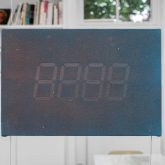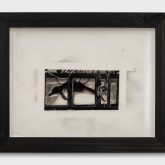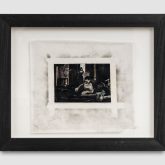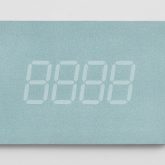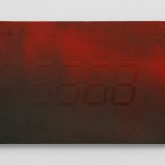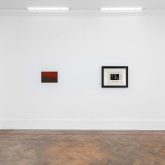July 5 – August 2, 2025
Hot Wheels London
91 Great Russell St
London WC1B 3PS
United Kingdom
This summer, an exhibition in London brought together Triangolo – the Cremona-based gallery founded by Leonardo Caldonazzo – and Hot Wheels, the Bloomsbury space directed by Hugo Wheeler and Julia Gardener. Though still young, Triangolo has carved out a distinct identity through a focused program and a clear ambition to assert itself internationally. Hot Wheels, in turn, exemplifies the renewed cultural energy coursing through one of London’s most historic neighbourhoods.
For this collaboration, Triangolo presented Politic, a two-person exhibition that paired the work of Italo-Brazilian artist Francesco João – previously shown by both galleries – with that of the iconic New York artist Robert Longo. On view through August, the show staged a dialogue shaped by influence and resonance: João has long acknowledged Longo’s pivotal role in his own artistic development.
A key point of convergence is Johnny Mnemonic (1995), Longo’s cult directorial debut, a dystopian cyberpunk thriller adapted from a 1981 story by sci-fi pioneer William Gibson, who also penned the screenplay. The film becomes a conceptual lens for João’s Seven Segment Display series, presented here alongside a suite of Longo’s charcoal drawings, the original visual studies and storyboards for the movie.
Installed in a single gallery space, the show unfolds as a rhythm of contrasts. João’s small, sophisticated paintings made with gouache, acrylic, and vinyl on raw canvas, are interspersed with Longo’s bold, cinematic works on paper. Visitors enter through a threshold marked by a João painting suspended mid-frame, revealing its reverse before its face. This quiet interruption sets the tone: the artwork is not simply an image, but an object. João’s paintings and Longo’s drawings share a similarly small format. João’s worksfeature alternating primary colors, shades of blue, red, and the yellow applied to the reverse sides of the canvases. In contrast, Longo’s works are rendered in his signature black and white and consist of sketches depicting three different film scenes, conceptual tools tied closely to the film’s narrative and visual language.
João’s practice circles around the notion of the present as “zero moment.” The past offers comfort; the future, while uncertain, feels predictable and tangible, a territory of constant speculation. The present, by contrast, is devoid of the time required for meaning making or reassurance. His repeated use of the obsolete seven-segment display’s image across his canvases captures this instability: we cannot tell whether the signal is on or off. It delivers pure information, immediate, unanalysable, and uninterpretable. A sign without message. A unit of time that resists commodification. As in the digital era, identity dissolves into data: what matters is not who you are, but what you transmit.
In this sense, João’s work probes the paradoxes of cognitive capitalism, a system that valorises predictable futures while flattening the present into a frictionless space of input and response. The now becomes a glitch: unreadable, unprofitable, opaque.
Longo, by contrast, is emblematic of a different era, the artist of Reaganomics and postmodern America, whose work emerged alongside the rise of Wall Street and media spectacle. It is no accident that Patrick Bateman, the antihero of American Psycho, owns two of Longo’s Men in the Cities drawings, the very series that cemented Longo’s fame within the cultural milieu he incisively critiques. But beneath the surface lies a deeper concern with power, violence, and image. His videos and films remain some of the most direct articulations of his vision. In Johnny Mnemonic, the body is transformed into a storage device, vulnerable, hybridized, exposed to invisible systems of control.
João’s repeated, minimalist digital iconography parallels the film’s focus on data transmission and identity dissolution, but approaches these concepts through a more abstract, symbolic, and material lens. Politic thus stages a confrontation between two visions of the present: one where identity is reduced to function, and another where information slips beyond the logic of use. Between João’s unreadable symbols and Longo’s charged renderings, the exhibition opens a space of tension, a moment where the present resists capture. Not yet capital, not quite past, it asserts itself as rupture. A system error. A zone of possibility.

